Share
Working at ESO
Are you interested in working in areas of frontline technology and in a stimulating international environment? Do you feel your profile matches our requirements? Learn more about our current vacancies and apply online. Read more..
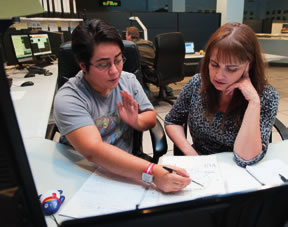
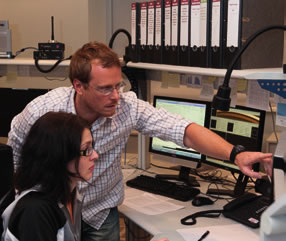

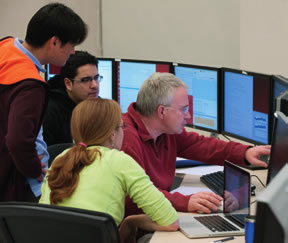
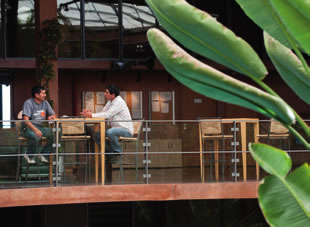

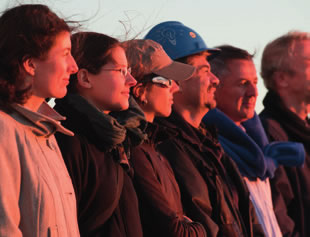

The European Organisation for Astronomical Research in the Southern Hemisphere (ESO) is the foremost intergovernmental astronomy organisation in Europe and the world's most productive astronomical observatory. ESO operates three unique world-class observing sites in the Atacama Desert region of Chile: La Silla, Paranal and Chajnantor. The ESO headquarters are located in Garching, near Munich, Germany. ESO is the focal point for Europe's participation in the Atacama Large Millimeter Array (ALMA) consortium, which is currently constructing a large submillimetre array in the Chilean Andes. The concept and design of a 39-m European Extremely Large Telescope (E-ELT) is also currently underway at ESO.
For the Directorate of Engineering (DoE) at the Headquarters in Garching near Munich, Germany, ESO is offering a grant for a:
PhD in Adaptive Optics Systems Engineering
'New challenges for AO Wavefront Sensing at the E-ELT'
Garching
Deadline 15/07/2015
The successful applicant will be part of the Adaptive Optics Systems Group (S.AOSY) of the System Engineering Department within the Directorate of Engineering.
S.AOSY supports telescope and instrument projects at ESO for what regards Adaptive Optics with the ultimate goal to provide the ESO astronomical community with worldwide competitive ground-based Adaptive Optics (AO) observing capabilities overcoming the limitation of atmospheric turbulence.
For the European Extremely Large Telescope (E-ELT), S.AOSY is involved in the development of the post-focal AO modules required by the future instruments to achieve their ultimate performance. The most elaborate systems will use tomographic Adaptive Optics with several Laser Guide Stars (LGSs) projected into the sky to reconstruct the volume of atmospheric turbulence above the telescope. In addition to lasers, several Natural Guide Stars (NGSs) are also required, in order to correct modes that are not probed by the LGSs.
Besides their genuine complexity, these systems will face new difficulties that must be studied and mastered, in particular concerning wavefront sensing. For instance, the fragmentation of the pupil by the wider spider breaks the continuity of the wavefront and raises new questions on wavefront reconstruction. The pupil fragmentation does not only appear on the ELT, but has been already observed on the VLT high order AO instruments (like Sphere and AOF), which will therefore benefit from this work. The spot truncation of elongated LGS with variable profiles yields unstable biases in measured wavefronts that need complementary measurements from an NGS truth sensor. For ultimate performances and sky coverage, non-linear wavefront sensors are considered for NGS truth sensing, like pyramid in diffractive regime or image-plane methods, and need to be correctly modeled to allow efficient reconstruction and control.
Among others, these points show a complex interplay between LGS and NGS wavefront sensors, including truth sensing strategy, that need to be studied and optimized in the environment of the telescope with moving pieces.
Task Description:
The student will first be asked to investigate how to mitigate the effect of the spider on pupil fragmentation, by analyzing the nature of the problem (missing and / or biased measurements) and then will propose methods to solve this - either by developing adapted reconstruction algorithms, or by adding measurements from additional natural guide star WFSs. If required, the student will analyze what non-linear WFS is suited for this task.
If time allows, the student will also consider spot truncation effects on WFSing accuracy and will propose methods to improve on this problem, also with a non linear truth sensor from natural guide stars.
Besides theoretical analysis, this work will mainly be carried out on ESO's Adaptive Optics simulation cluster, using the OCTOPUS simulation tool. This tool, aims at simulating the adaptive optics system in very fine detail, and is written in parallelized C. The student shall use (among others) this tool to study the laser and natural guide star sensing of the tomographic system. Although Octopus already has the capabilities to simulate most of the effects described here (like truncated LGS spots, Pyramid wavefront sensors, thick spiders,...), it is likely that new modules will have to be implemented.
Supervisor and partners:
The student will be supervised by a staff member of ESO from the Adaptive Optics Systems Group of the System Engineering Department and CRAL - Observatoire de Lyon. The scientific supervision of the thesis will be done by CRAL.
Duty station:
The duty station of the student will be Garching, near Munich, Germany with some time spent at Observatoire de Lyon, France. Collaborations with European institutes specialized in wavefront sensing are planned in the framework of this thesis.
Profile:
The PhD candidate should be interested in and have a good knowledge of:
- Optics, wavefront propagation, wavefront sensing;
- Inverse problems;
- Numerical methods and algorithms, simulations;
- Notions the C-language and parallel programming would be assets.
The successful candidate should also demonstrate the following competencies:
- Work both on your own initiative and as part of a team;
- Build strong collaborative working relationships with people from different cultural backgrounds and disciplines;
- Flexibility in adapting to changes of requirements and priorities.
Qualification:
University degree in Engineering, Physics or Astronomy.
Language Skills:
Excellent command of the English language - oral, reading and writing - is essential.
Duration and contract:
The studentship pstarts with an initial contract of one year followed by a two-year extension (3 years total). The starting date of the contract is 1 September 2015.
Duty Station:
Garching near Munich, Germany.
Application:
If you are interested in this position and ready to work in a stimulating international environment, please visit http://www.eso.org for further details.
Please apply online at http://jobs.eso.org/. Your application must be completed in English and include a motivation letter and CV. In your CV you should provide us with the names and contact details of three persons familiar with your work and willing to provide a recommendation letter on request.
Closing date for applications is 15 July 2015.
No nationality is in principle excluded. However, recruitment preference will be given to nationals of Austria, Belgium, Brazil, the Czech Republic, Denmark, Finland, France, Germany, Italy, the Netherlands, Poland, Portugal, Spain, Sweden, Switzerland and United Kingdom.
The post is equally open to suitably qualified female and male applicants.
